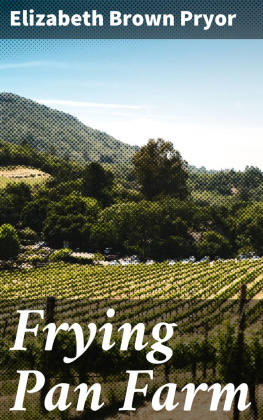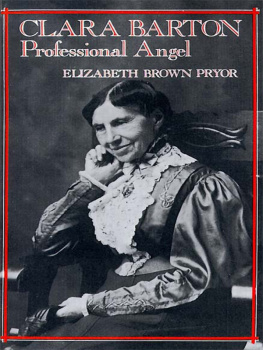INTRODUCTION
Table of Contents
In 1925 Fairfax County was still predominantly rural in character. Farmers occupied over half of the county's land, living on individual holdings which averaged 62.5 acres. Nearly 85% of these farmers were white and of this group only 15% did not own their own farm. They shared their domain with 3,605 horses, 11,636 head of cattle, 5,408 swine, 171,526 chickens and 178 mules. One-tenth of the farms enjoyed the use of a tractor and 25% had a radio. The average capital holding on land and buildings was $8,229, and the Fairfax County farmer netted something less than $1,000 income annually.
These figures give a skeleton picture of Fairfax County's most prominent citizen in the period between the two World Wars; when the statistics are translated in prose, his shadowy form gains weight. The farmer at this time was a small landowner, possessing a farm only as large as his own family and a few hired laborers could manage. Although his capital holdings were not huge, they were well above the state average. He had the prestige of being a homeowner, and the pride of working his own soil, perhaps the same soil his grandparents had tilled. The rural family raised livestock for their own use, but principally for the market, and favored draft horses over tractors, mules or oxen to power farm equipment. This farmer's time was spent on a myriad of duties and detailshis function was not yet totally specializedranging from butchering hogs to building chicken coops to thinning corn. He worked for himself, planning the day's activities, relying on his own judgment and initiative to cope with the varying responsibilities he shouldered. His numerical prominence gave him political and social leverage. It was the rural way of life that shaped the county and his demands which needed to be met.
At first glance this farmer's life seems tempered by nature and largely self-contained. The daily routine was established by seasons and sunlight; fortunes were made or lost at the mercy of the wind and rain. A farm was not only the farmer's livelihood and workshop but his home. Thus, unlike the city worker whose occupation was entirely separate from home concerns, country life had a total integration.
In both startling and subtle ways, however, the traditional role of the family farmer was changing in the 1920s and 1930s. In Ellen Glasgow's novel Barren Ground , which examines the uncertainties of life on a northern Virginia dairy farm, the heroine, Dorinda Oakley, describes her emotional and economic reaction to the post World War I period:
With the return of peace she hoped that the daily life on the farm would slip back into orderly grooves; but before the end of the first year she discovered that the demoralization of peace was more difficult to combat than the madness of war. There was no longer an ecstatic patriotism to inspire one to fabulous exploits. The world that had been organized for destruction appeared to her to become as completely disorganized for folly.... The excessive wages paid for unskilled labour were ruinous to the farmer, for the field hands who had earned six dollars a day from the Government were not satisfied to drive a plough for the small sum that had enabled her to reclaim the abandoned meadows of five oaks.... She was using two tractor-ploughs on the farm; but the roads were almost impassable again because none of the negroes could be persuaded to work on them. Even when she employed men to repair the strip of "corduroy" road between the bridge and the fork, it was impossible to keep the bad places firm enough for any car heavier than a Ford to travel over them....
Thus, social and technical advances that had long been desired in rural areas bolstered the farmer's optimism. Yet curiously enough this same progress often jarred his expectations and financial security. Improved roads meant improved markets, and increased contact with outside communities but, along with the advent of the radio, they resulted in a homogenizing of city and country ways, and lured many away from the farm. Concern for rural welfare prompted all levels of government to design programs to aid the farmerprograms which indeed furthered agriculture, but at the price of well-meaning interference in a previously highly individual sphere. Amid regulations and forms the farmer felt a nagging loss of independence. Perhaps most strikingly, widespread use of gasoline-powered equipment changed the pace of work, made him reliant on outside sources for fuel and parts, and involved investments which often prohibited purchase or encouraged specialization.
Hence, the family farm retained its size and shape but it could no longer revel in complete self-reliance.
The model farm at Frying Pan Park is a representation of this changing way of life. It recognizes especially the role of the family subsistence farmer and his contributions to the economy and solidarity of Fairfax County's rural communities. Although this study focuses on the institutions and personalities of the Floris-Herndon area, it is meant to be generic in scope. Dairying, which forms one emphasis of this monograph, was widespread in the area, and though each district had its distinctive elements, the underlying social values and farming methods were consistent throughout the county. In essence, Frying Pan Farm works much as a snapshot would to recall an important phase in Fairfax County's history. It gives a brief glance at a world we have lost, but which lingers significantly in the region's memory.
NOTES
Introduction
United States Census of Agriculture, 1925, Statistics for Virginia (Washington. D.C., 1928).
See, E. P. Thompson, The Making of the English Working Class (London, 1966), 76-78.
For an overview of Jefferson's political beliefs, including his admiration for the small farmer, see John C. Miller, The Federalist Era (New York, 1968), 70-83.
Ellen Glasgow, Barren Ground (Richmond, 1925), 448-49.
PART I
Table of Contents
Continuity
Table of Contents
Tradition and personal experience colored the 20th century farmer's reactions. He was accustomed to a world in which his occupation and social status were assured, and childhood experience probably led him to assume the farmer's role naturally. The rhythms of farm life were based on the immutable round of the seasons. Each day's sun and wind pulled the tiller in its direction as did the unceasing need to tame the growth and habits of beasts and land. Nature was the farmer's clock, and though he bid the land to produce what he desired, it was the earth which fixed his hours and chores. From this close association with nature came a continuity and special bond between farmers, which defied both time and place.
Although the early years of the 20th century heralded a new era of specialization in agriculture, the farmers of Fairfax County persisted in executing the varied functions of general farming. Dairying might be the emphasis on many farms, but it was rarely pursued at the expense of production of grain or food for home consumption. Variety continued to be an important quality of farm work. Families on large and specialized farms still did chores similar to those done by subsistence farmers, though the amount of time allotted for each task might differ. The relentlessness of certain activities, such as feeding the stock, was the same whether the farm boasted one cow or fifty. Thus distinctions between general and specialized farmers were not so clear-cut in this period. The following pages detail the work done on a small dairy farm, yet the kinds and methods of activities also pertain to the farmer whose acreage was devoted solely to general farming.





